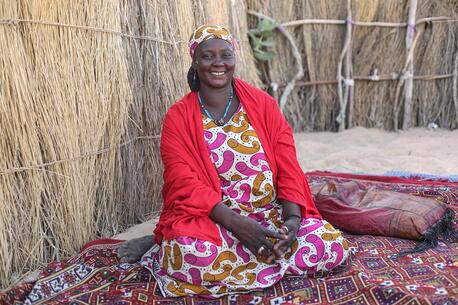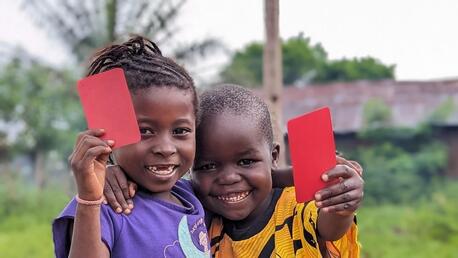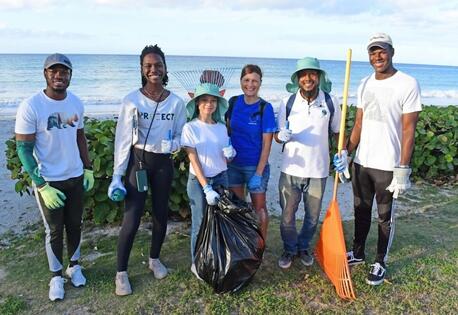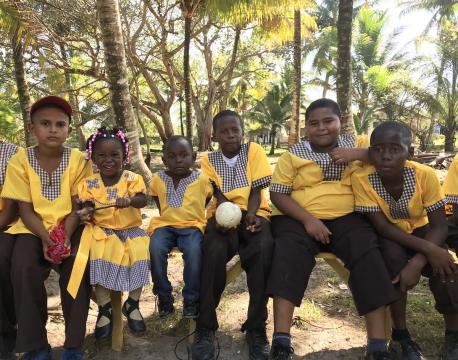
Why Children Are Fleeing Honduras, and What UNICEF Is Doing About It
In Honduras, seven out of ten children live in a home classified by UNICEF as below the poverty line. Forty-three percent of children do not live with their parents, because their parents have departed for other nations in search of work. Three out of four children leave school between the ages of 12 and 18.
Once they leave school, more than half are faced with the impossibility of finding a job. A sense of hopelessness pervades the communities. Yet the overwhelming majority of children that UNICEF staff members have met in Honduras have said they do not want to leave home. They express love for Honduras and admiration for their culture. Those who do plan to migrate say it is because they see no way to make ends meet at home or they feel endangered. About 10 percent of those children who migrate were already displaced from their homes before they left. According to interviews conducted by the National Child Protection Agency in July, 2018, more than half of children who were later returned to Honduras said they had left because of gang violence or other criminality. Almost a quarter cited family violence.
Many children who migrate — over 43,000 since 2014 — are intercepted during their dangerous journeys and returned to Honduras. A UNICEF study has shown that 30 percent of returned migrants suffer from post-traumatic stress syndrome. All of the children who are sent back are received at the Belen Center for Returned Migrant Children and Families, in San Pedro Sula. More than 10,000 children passed through the center in 2018 alone. Half the children returned are alone. UNICEF ensures that they are accounted for and that they are provided psychological counseling, informed of their rights and given school, housing and job opportunities — even bus tickets. The overall goal is to reintegrate children safely into their home communities. But that's not always possible. If their homes are unsafe, UNICEF helps find an alternative living situation.
UNICEF works to improve life for children who stay in Honduras, too — in particular to heal violence, protect children, improve education and, through programs and activities offered with the Chamber of Commerce, civil society organizations and municipal governments, to give children opportunities to thrive at home.
At Escuela Agusto C. Coello, in Villanueva, 15 children at the school have recently tried to migrate and been returned. UNICEF and the Honduran Red Cross provide psychosocial counseling and support to children who have attempted to migrate as well as to children who have been affected by the migration of family members. Here, the children blow into balloons as a way to release their anxieties, then write their worries on the balloons.
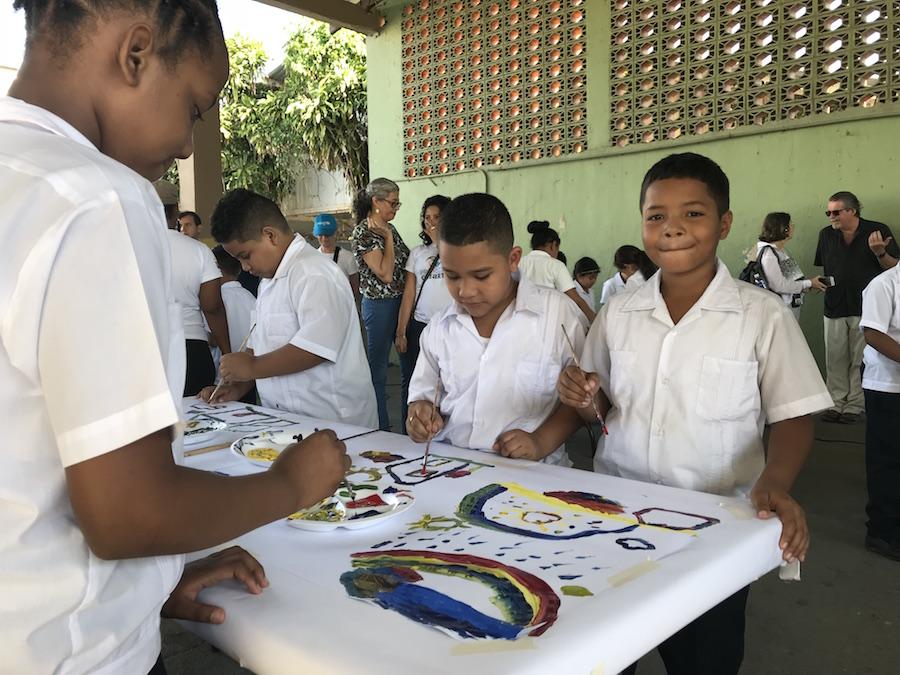
At Escuela Atenea in San Pedro Sula, UNICEF and Mujeres en las Artes create projects and activities aimed at helping children and adolescents use art to process feelings about the anxiety, violence and displacement they may be suffering. The children are encouraged to express their feelings in group paintings. They paint to music.
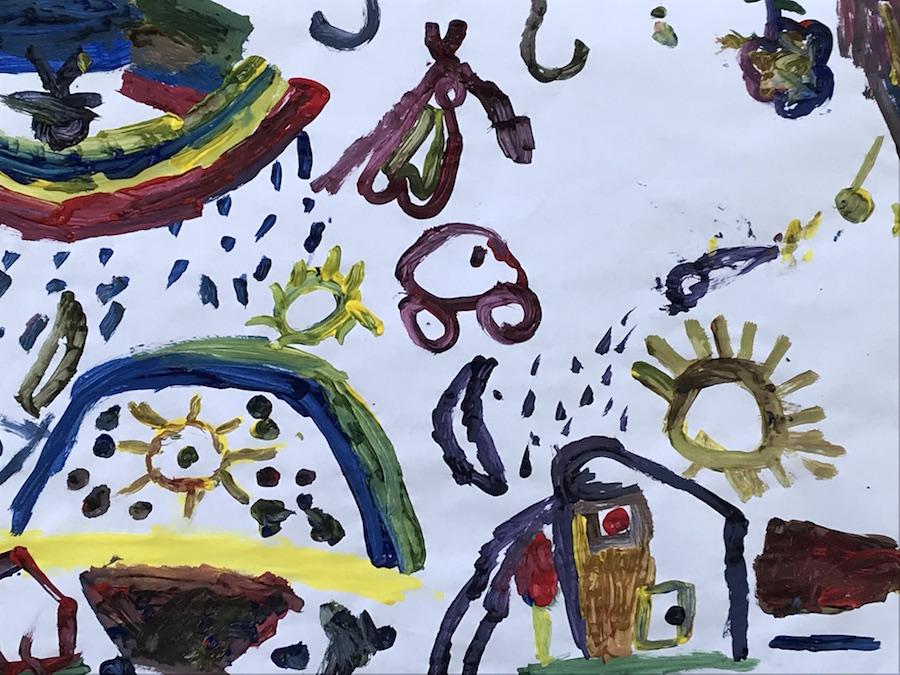
Many of the children's paintings include depictions of homes, remembered, lost or imagined.
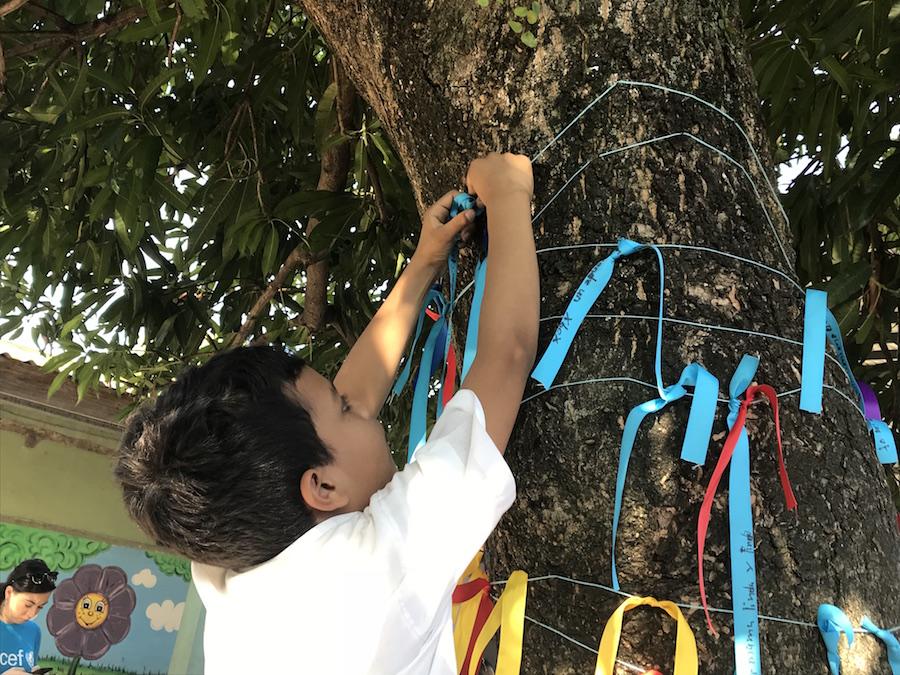
Children are also encouraged to write their feelings and hopes on ribbons and hang them on a “feelings tree.” One ribbon reads “My mother loves me.” Others read: “I wish my mom would hug me,” “I wish my mom feels happy about me,” “I want my mom to give me affection and spend time with me," "I wish my mom could take me for ice cream."
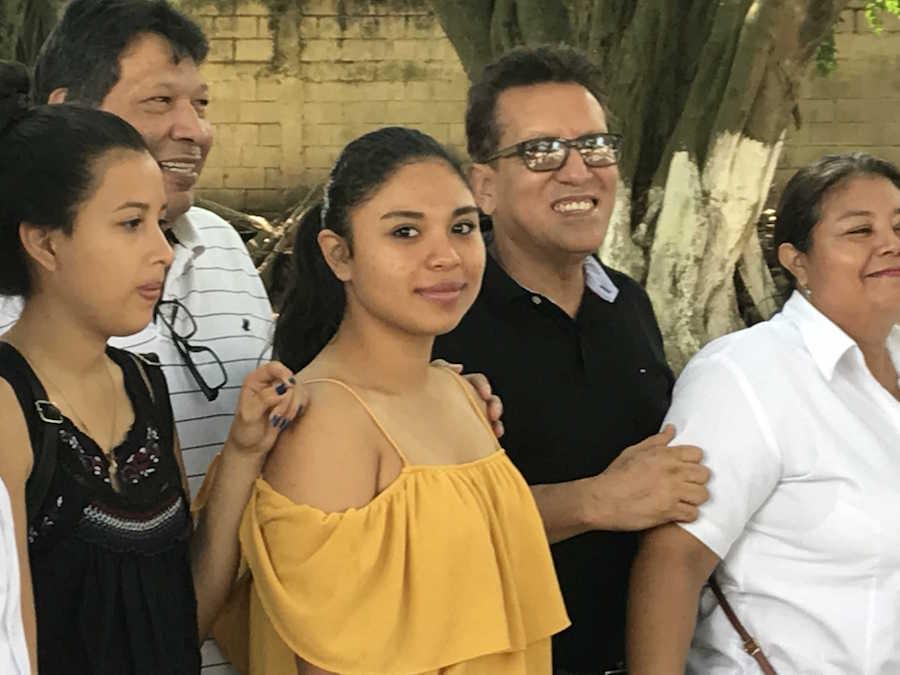
Carmen, 15, above center, attends the Instituto Perla del Ulúa in El Progreso, a region plagued by poverty, gang warfare and an exodus of migrants. A program at the school, organized in part by the UNICEF program Peace Co-existence and Citizenship, has helped improve the safety of the students and given them hope. "A teacher told me poverty pushed him to get ahead in life," says Carmen. "As I have been motivated, I want to motivate others as well. The youth are the future of Honduras." Her dream is to go to university and graduate as a psychologist.
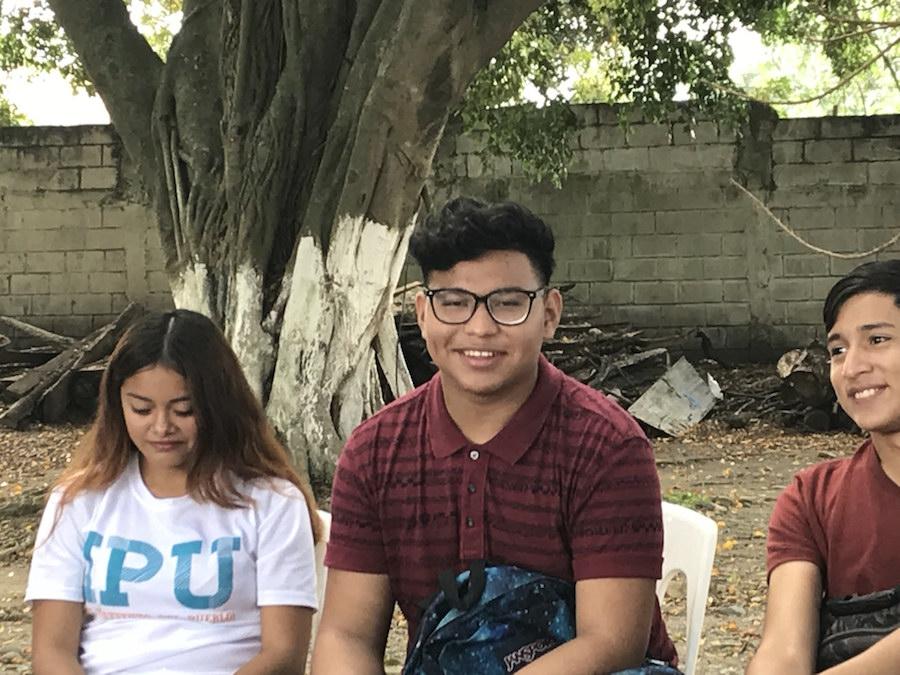
Also at the Instituto Perla del Ulúa, Christopher, 17, above, says the violence-prevention program at the school has helped. “Before, the youth weren’t understood. We had a lot of things inside us and we didn’t know how to externalize them. We don't need to be yelled at. We want to be listened to. Just one conversation makes a difference." Still, he wants to migrate to the United States. There is not enough support for kids in his community, he says, so "they get their support from the streets." He feels there will be no opportunities for him once he graduates. He wants to be an electrical engineer. "My first dream is to build a house for my mother. My second goal is to see snow. The first thing I will do in the U.S. is make a snow angel."
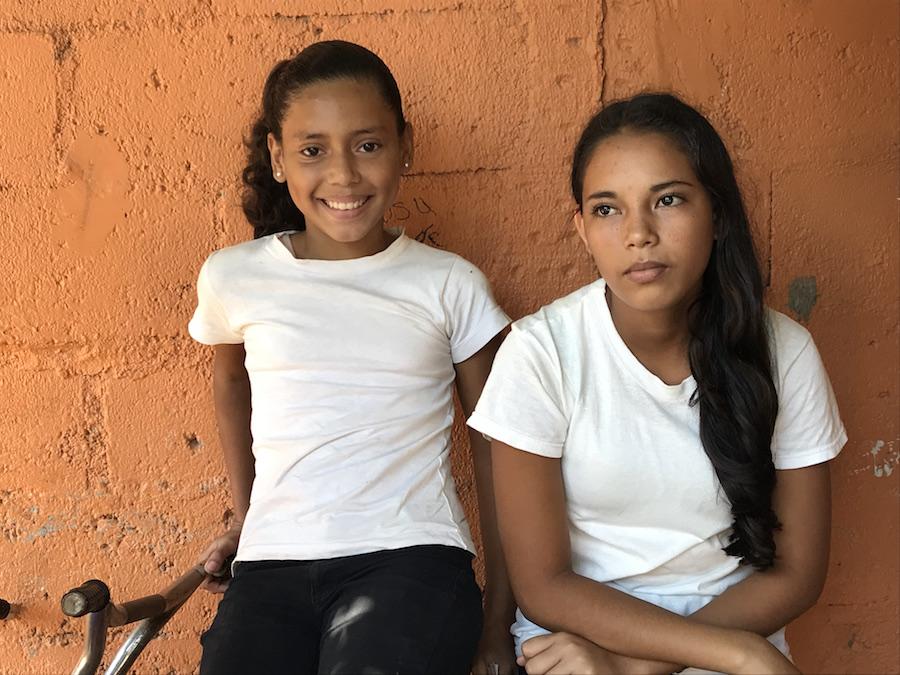
These girls attend the Miguel Paz Barahona School, in Bonitillo neighborhood of La Ceiba, where there has recently been so much gang violence that children were afraid to go to school and mothers were accosted and robbed after dropping off their kids. School attendance dwindled to just 60 students. Now, thanks in part to UNICEF-supported interventions, there are 700 students enrolled in the school. The community has taken back their neighborhood and created well-lit parks and safe public spaces for children to play and learn.
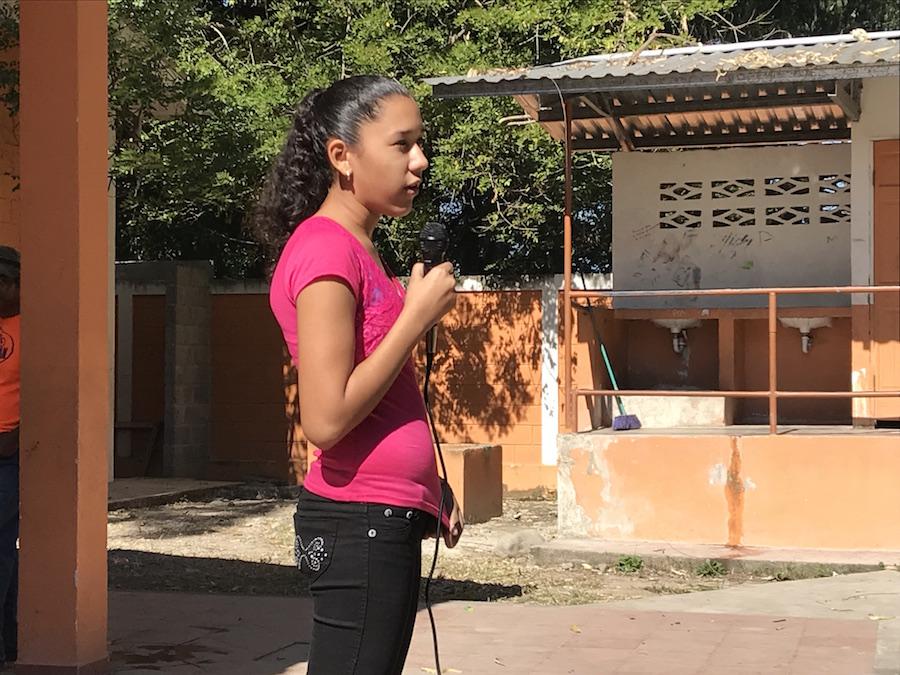
The head of the student government, here addressing the school, says, "We were living under terror, and a lot of our relatives were killed. Now it is much better. We can live happily and go out after dark."
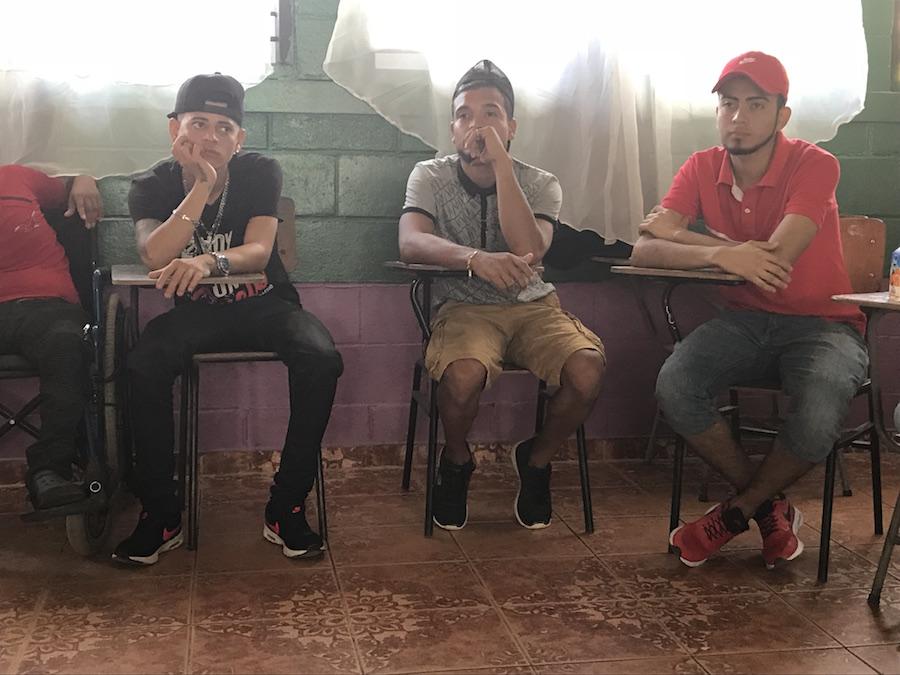
But in other communities, there is less hope. At a meeting at Escuela 3 Avril in Paujiles, in the municipality of El Progreso, Jorge, 21, center, says, "All we want is a job opportunity in our country, but there are no jobs. I'm going to try to migrate in a caravan. I'm not afraid — I'm afraid to stay here."
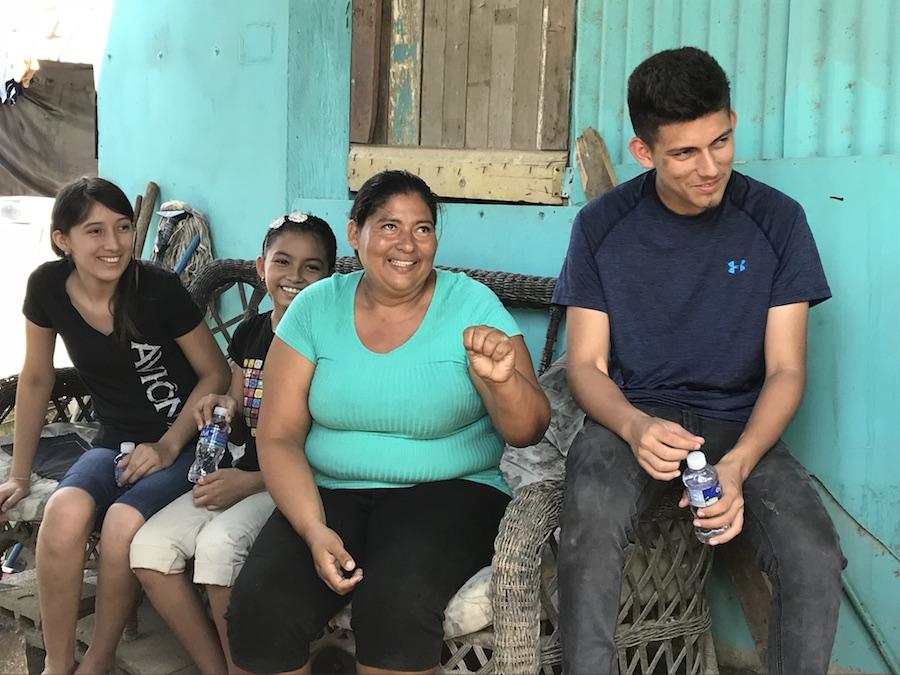
A mother's love can propel her to migrate from Honduras. This mother (above) has migrated from her neighborhood of Pajuiles, near El Progreso, five times and suffered discrimination, deprivation and sexual attacks along the way. "Every time I have left it is out of love, to give my children a home," she says. The family is living with insecurity on land they don't own.
Andrea, pictured here with UNICEF USA Chief Development Officer and Executive Vice President Barron Segar, attended a community meeting in the seaside Corozal Village, near La Ceiba, where they discussed what drives young people from the community to leave Honduras, and how UNICEF can help. Andrea helps support her family by selling raffle tickets for clothing that she finds or has donated to her. "I have many siblings who have migrated," she says. "One sister and three brothers. This happened because we do not have an economy."
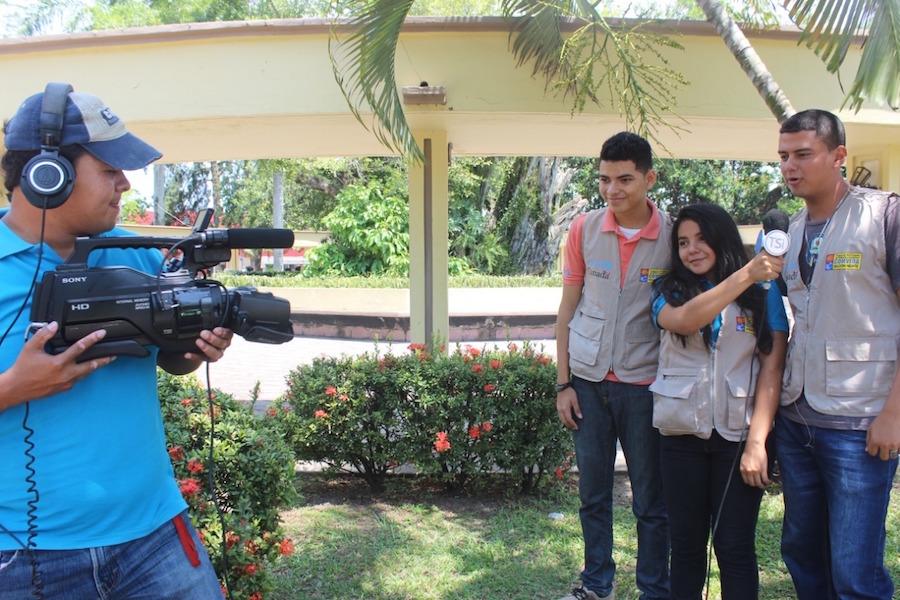
Above, a network of young communicators are hard at work reporting on the state of their communities. The program is supported by the municipality of Puerto Cortés and UNICEF, and has expanded to 64 municipalities across the country. One young journalist says, "We have to change the way people think. We have gone through many difficulties when it comes to migration. People are fleeing violence, the lack of job opportunities — we have a lot of obstacles and limitations." When asked how she feels about volunteering to tell the stories of the people of Honduras, she says, "If you love what you're doing, you can do it with love."
Top photo: In March 2019, school children in a village near Puerto Cortés, Honduras met with UNICEF to talk about the needs of the Garifuna (Black Carib) community. All photos © UNICEF
